Urinary tract infections (UTIs) are common health problems, which will affect a lot of dogs over the course of their lives. In fact, the Merck Veterinary Manual points out that they’re the most common infectious disease that affects dogs.
Fortunately, most UTIs are easy to treat. Typically, you’ll just need to scoop up your pooch, run her over to the vet, grab a script, and start doling out the medicine. In most cases, your dog will be peeing without problem in a week or so.
That said, UTIs undoubtedly make dogs feel rotten while suffering through them, so you’ll want to prevent them whenever possible and learn to spot the signs and symptoms they trigger, so you can get your pooch the help she needs.
We’ll talk about all these things and more below.
What Is a Dog UTI, Anyway?
To understand what a UTI is and how they cause problems for pets, you’ll first need to understand the anatomy of your dog’s urinary system. There are four key components of the system, and they each carry out different tasks.
- Kidneys – Your dog’s kidneys primarily serve as blood filters. Essentially, blood is pumped through the kidneys, and the bad or unnecessary stuff (primarily nitrogenous waste products and excess water) is filtered out. Once filtered, the now-clean blood to be pumped back into circulation.
- Ureters – The ureters are simply tubes that travel from each kidney to the bladder. They don’t do much besides carrying urine from the kidneys to the bladder.
- Bladder – The bladder is the big storage vessel of the urinary tract. Urine is stored here until the bladder is full (or nearly so), at which time it is released via the urethra.
- Urethra – Like the ureters, the urethra is just a tube that ferries urine from the bladder to the outside world. However, while the ureters are paired, there is only one urethra.
Despite notions to the contrary, healthy urine isn’t sterile. But, in the case of a healthy urinary tract, the bacteria and other microorganisms present don’t cause any problems. They simply get flushed out when your dog voids her bladder.
However, from time to time, pathogenic bacteria – that is, bacteria that can cause illness – gain access to the urinary tract.
Normally, the bacteria enter the urinary tract via the urethral opening. But unlike harmful bacteria, which don’t cause problems or are easy for your dog’s body to flush out, trouble-making bacteria start clinging to the lining of the urinary tract.
In most cases, the bacteria cling to the sides of the urethra or the bladder. This is called a lower urinary tract infection. However, if your dog does not receive treatment or the bacteria involved are particularly insidious, the infection can spread upwards, allowing the bacteria to colonize the ureters or kidneys.
This is often called an upper urinary tract infection. While all urinary tract infections demand prompt treatment, upper urinary tract infections are even more cause for concern, as they can lead to very serious complications.
The bacteria involved with UTIs may also affect the prostate glands of male dogs.
Causes of UTI in Dogs: Why Is Your Dog Suffering?
The ultimate cause of any UTI is bacteria or, in some cases, other types of harmful microorganisms, such as fungi or parasites.
As explained earlier, these bacteria normally enter the body via the opening of the urethra.
But it isn’t always that simple.
After all, bacteria are everywhere, and your dog’s body normally fights off any potential infections before they can occur. In practice, UTIs are more common in some situations and for some dogs than others.
Some of the risk factors that make a dog more likely to develop a UTI are discussed below:
Sex
One of the biggest risk factors for UTIs is simply being female. This is true of most mammals (including humans), primarily because of the architecture of the urinary tract and the differences between males and females.
Female dogs have a relatively short urethra, while males have much longer ones. This means it is more difficult for bacteria to travel up the length of a male’s urethra than it is for the bacteria to travel up the relatively short distance between the urethral opening to the bladder in females.
Additionally, female dogs tend to squat while peeing, which puts their lady-dog parts in close proximity to the ground, which may be contaminated with bacteria.
Males, on the other hand, generally keep their equipment pretty high above the ground while tinkling.
Age
UTIs are often more common in older dogs than younger dogs. This is particularly true of spayed females and unneutered males.
It isn’t exactly clear why this is the case, but it may just reflect the fact that your dog’s defenses weaken over time.
It also bears mentioning that a condition called urethral sphincter mechanism incompetence (a condition in which the bladder’s sphincter fails to operate properly) can often be mistaken for a UTI. This may be part of the reason UTIs are thought to be more common in older dogs.
Breed
Some breeds may be more likely to develop urinary tract infections than others. This is especially true of those breeds that are most susceptible to some types of bladder and kidney stones. Called struvite stones, these hardened, crystal-like masses are often associated with bladder infections.
Yorkies, Shih Tzus, and Bichon Frises are a few of the breeds who tend to be at the highest risk of suffering UTIs, so owners of these dogs must be especially vigilant
Health
Your dog’s general health can influence her chances of developing bladder infections.
For example, dogs with kidney disease often battle chronic bladder infections, as do dogs with elevated glucose levels in their urine, such as often occurs in dogs with diabetes or Cushing’s disease.
Obesity may even lead to an increased risk of UTIs, as excess skin can provide pathogenic bacteria with more places to live.
Drinking Habits
Generally speaking, urination is pretty helpful for preventing UTIs. Every time your dog pees, it helps to flush out some (though not all) of the bacteria present. So, the more your dog pees, the cleaner her system will stay.
This means that dogs who tend to drink a lot of water usually suffer from fewer UTIs than those who don’t drink a lot.
Environment
Dogs kept in unsanitary conditions are going to be exposed to a lot of bacteria, which can increase the odds of them suffering from UTIs.
Additionally, dogs who spend a lot of time running around in overgrown vegetation or tall grass may be at higher risk of contracting UTIs, as the vegetation may harbor bacteria.
Medications
Some medications may increase your dog’s chances of suffering from a UTI.
In fact, a 1989 study of UTI risk factors found that corticosteroids (such as prednisone) and antibiotics are two of the most common reasons dogs suffered from UTIs.
Long-term corticosteroid use may dampen the immune system, which triggers bladder infections in up to 30% of individuals (interestingly, neutered males were at greater risk of suffering UTIs than unaltered males were according to one study).
However, the steroids will usually prevent dogs from suffering the pain and inflammation UTIs often cause, which can allow them to go undiagnosed. Accordingly, most vets will recommend performing regular urinary cultures for dogs who need corticosteroids over a long time period.
Antibiotics can cause UTIs by killing off some of the beneficial bacteria living on or in your pet’s body. These beneficial bacteria help to prevent UTIs through competitive exclusion, but when they’re eliminated, the pathogenic bacteria can proliferate.
This means that targeted antibiotics, which only affect a narrow range of bacterial strains, probably don’t cause UTIs as often as broad-spectrum antibiotics do.
Surgery and Other Invasive Procedures
Some surgeries and other medical procedures – including, most notably, the insertion of a catheter – can lead to UTIs.
Catheterization was actually listed as one of the leading reasons dogs developed UTIs in the 1989 study referenced earlier.
Vaginal Infections
Because your dog’s urethral opening is so close to her vaginal opening, bacteria from her vagina can also trigger UTIs.
This may occur as the bacteria naturally migrate, or it can be hastened by your dog’s grooming (licking) behaviors.
Symptoms of UTI in Dogs
It is important to familiarize yourself with the symptoms of UTIs so you can begin treatment as quickly as possible. UTIs are certainly no fun for your dog, and she deserves prompt veterinary treatment anytime she suffers from one.
Some of the most notable and common symptoms of UTIs include:
- Frequent urination
- Difficulty initiating urination
- Bloody urine
- “Accidents” occurring in dogs who are already housetrained
- Dripping urine
- Signs of pain during urination (vocalizations, troubled expressions, tense body posture, etc.)
- More frequent genital licking than usual
- Fever
- Back pain
- Strong or unusual odors associated with your dog’s urine
- Lethargy
- Vomiting
- Weight loss
- Drinking copious amounts of water
Note that these symptoms can also indicate a number of other problems, many of which are much more serious than UTIs.
For example, frequent urination in dogs can also indicate things like kidney failure, kidney stones, kidney infections, prostate problems (in male dogs), or even septicemia.
It is also important to note that UTIs can occasionally fail to trigger any obvious symptoms at all. These “silent” UTIs are particularly troubling, as they can often become quite serious before you begin treatment.
Dog UTI Treatment: Over the Counter Options
There aren’t any over-the-counter medications that will treat your dog’s UTI.
UTIs are typically treated with antibiotics (although there are exceptions), and most antibiotics are prescription-only drugs.
There are a few herbal remedies that some claim will treat a UTI in dogs. A few of the most common include:
- Goldenrod Horsetail (Solidago canadensis) extracts
- Arctostaphylos uva-ursi extracts
- Cranberry Extracts
- Vitamin C
- Berberine
However, you should never administer these (or any other herbal products) to your dog without speaking with your vet first.
There is a tiny bit of evidence that suggests some of these herbs – most notably goldenrod horsetail and Arctostaphylos uva-ursi extracts – may provide some value in treating UTIs, but most have not been the subject of many clinical human studies, let alone studies involving dogs. In fact, the study of goldenrod still involved antibiotic therapy.
We’ve written about cranberry extracts for dogs before. They’re likely safe (as long as they’re formulated for dogs, rather than humans), and they may offer some preventative value, but they’re unlikely to treat an existing UTI.
Vitamin C is completely unnecessary – your dog’s body already makes all of the Vitamin C she needs. Additionally, in large doses, the antioxidant benefits Vitamin C can provide actually have the opposite effect and lead to premature cell damage.
So, given that:
- Most of these herbs and natural remedies have not yet been conclusively demonstrated to be safe for canines
- They can interact dangerously with some medications
- You’ll still need to discuss their use with your vet (which will likely require you to take your pup in anyway)
- Your vet has much better treatments he or she can prescribe
It’s usually a better idea to skip these types of unproven remedies and just use the medications your vet recommends.
And don’t forget: UTIs suck! They can cause significant pain and discomfort, and they put your dog at risk for more serious health problems. You don’t want your pooch to suffer for one second longer than necessary, so just head in to the vet and get her fixed up ASAP.
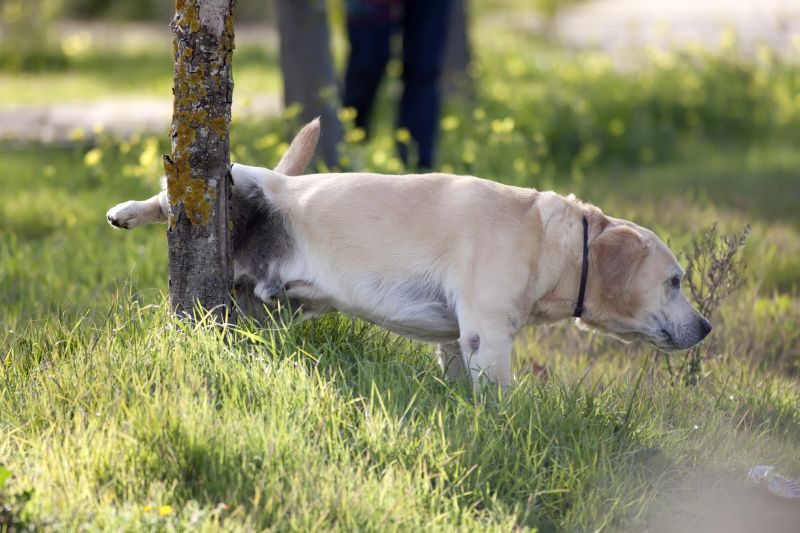
Home Remedies for UTI in Dogs
There are a few home remedies to treat UTI in dogs, but they are unlikely to be completely effective.
This includes things like:
- Bathing your dog – especially her genital area – in warm baths
- Encouraging her to drink more water
I know this isn’t a very satisfying answer, but the truth is, you’ll just need to take your dog to the vet anytime she suffers from a UTI. It’s the only completely safe, effective, and humane way to treat the issue.
How Vets Treat UTIs
Urinary tract infections are highly irritating, and they are frequently painful. While mild infections won’t cause serious health problems, untreated infections can spread and cause long-term damage. They can also trigger the formation of a type of urinary tract stone known as a struvite stone.
Accordingly, you’ll want to treat your dog’s UTI promptly. This will not only help her feel better, it’ll help prevent more serious problems from developing.
Unfortunately, the only effective way to treat most UTIs is with antibiotics. But on the plus side, antibiotics are easy to administer, largely safe, and typically effective. They’re usually pretty affordable too, as most common antibiotics used to treat UTIs have been around long enough to be available in generic form.
Typically, vets will treat UTIs by performing a physical examination, taking a history, and collecting a urine sample. The vet can analyze some aspects of the urine on site (such as determining the urine’s pH and detecting white or red blood cells that may be present), but they’ll usually send the sample off to a laboratory to culture and identify the bacteria that’s causing the problem.
Note that in some cases, your vet may have to perform a procedure known as a cystocentesis (the insertion of a needle into the bladder) to obtain a urine sample that has not been contaminated by vaginal bacteria.
The primary thing the lab will try to determine is the type of the bacteria present. For example, your vet will want to determine if there are any E. coli in your dog’s urine.
After isolating and growing the bacteria in a petri dish, the lab workers can then determine which antibiotics are capable of killing the pathogen and resolving the infection.
Many vets will prescribe a broad-spectrum antibiotic – especially during your initial visit. Once the lab results come back, your vet may change the prescription or advise you to continue with the antibiotic he or she has already prescribed.
In most cases, the antibiotics will eliminate your dog’s UTI within one to two weeks.
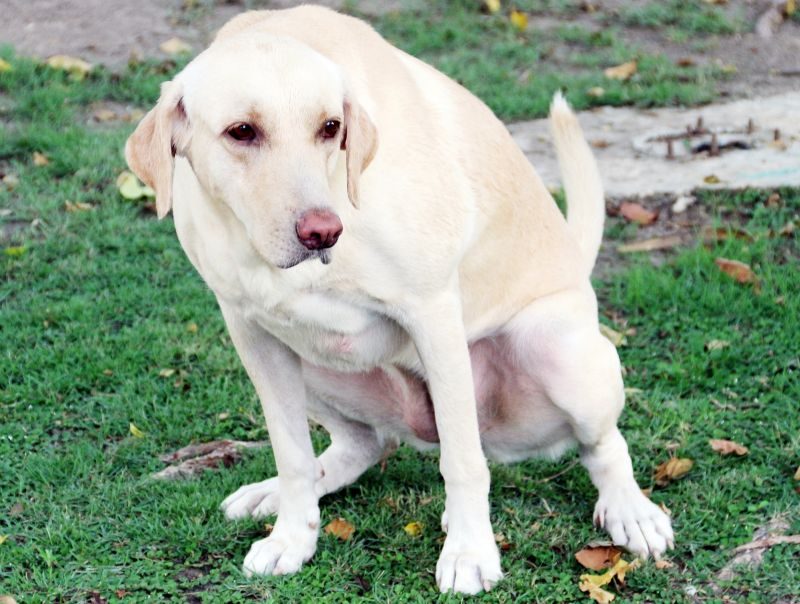
How to Prevent UTI in Dogs
In many cases, UTIs are simply unavoidable. However, there are a few things you can do that may give your dog’s body a better chance of fighting them off. A few of the most notable things include:
Support Your Dog’s General Health
The healthier your dog is, the better her body will be able to fight off UTIs and other infections. So, be sure to feed her a healthy diet, make sure she gets plenty of exercise, and visit your vet regularly.
Encourage Your Dog to Drink Plenty of Water
The more water your dog drinks, the more she’ll be able to flush out her urinary tract, which will help keep bacterial populations in check. For most dogs, all you’ll need to do is make sure that they have constant access to fresh, clean and cool water – they’ll take care of the rest.
However, some dogs are poor drinkers.
In such cases, you may want to try a few of the following things, which may encourage her to consume more water:
- Pick up a pet water fountain. Moving water is simply more appealing to some pets, so be sure to check out our complete guide to dog water fountains.
- Add something tasty to her water. Let’s face it, water isn’t exactly delicious – it doesn’t taste like anything at all. So, think about dropping a teaspoon or two of low-salt chicken broth or a few pieces of fruit (such as strawberries or watermelon) into your pup’s bowl.
- Switch to a wet or canned food. There’s nothing wrong with kibble, but it doesn’t contain very much water. So, if you have a poor drinker, consider switching to a wet food, which will help ensure she ingests much more water than usual.
- Give her frozen treats on hot days. Kids aren’t the only critters who enjoy frozen treats in hot weather – many dogs do too. So, freeze a little fruit juice (avoid grape – it’s toxic to dogs) over night, and let your dog enjoy the next day. You can even pick up a fun mold to make it easier to offer your dog frozen treats – or opt for a freezable chew toy. Just be sure to supervise your dog carefully to make sure she doesn’t try to bite the frozen treat, as this may lead to oral injuries.
Bathe Your Dog Regularly
Regular baths can help wash away some of the bacteria on your dog’s skin, which may help reduce her chances of developing a UTI. Just be sure that you don’t do so too often, as this can cause coat and skin problems.
Different dogs require slightly different bathing schedules, but once-a-month is usually a decent rule of thumb.
Keep Your Dog Away from Filthy or Overgrown Areas
We all know how adorable some dogs can be when rolling around in a mud puddle or trying to dig a hole to the center of the earth. I’m not telling you that you need to completely stop letting her roll around in the dirt from time to time, but you may want to limit such opportunities, if your dog suffers from frequent UTIs.
Similarly, you should probably not allow your dog to swim in dirty water either, as this will also expose her to potentially problematic bacteria.
A post-filth bath is also wise, but this usually a good idea anyway.
Provide Your Dog with Probiotics
There isn’t a huge amount of data that suggests probiotics may help prevent UTIs, but there is a little.
Probiotics are largely considered safe, and they probably provide a few other health benefits too, so they may be worth trying if your dog suffers from chronic UTIs.
Also, in addition to the recommendations listed above, it is wise to work closely with your vet if your dog is taking any medications, suffering from any diseases, or slated for any procedures that’ll put her at increased risk of developing a UTI.

Dog UTI Test: How Do I Know If My Dog Has a UTI?
Believe it or not, there are home tests for UTIs available.
They’re pretty easy to use, they’re not really expensive, and they can help you keep an eye on your dog’s urinary-tract health.
Just be sure that you read the instructions carefully, as different dog UTI test kits require you to do different things to obtain valid results. It is also wise to have your vet interpret the results, as they can be tricky for canine parents to understand.
The Coastline Global Checkup Kit is one of the best dog UTI test kits available, and it also checks for several other health problems, such as diabetes.
- Telescopic Pole for Easy Urine Sample Collection, use from a "safe" distance and store it easily...
- Dip one of the strips in the urine for 2 seconds, then dab the excess liquid on a paper towel. After...
- 2 Testing Strips to Test & Detect detect indicators for 4 of the most common health indicators...
- parameters including Urobilinogen, Glucose, Bilirubin, Ketone, Specific Gravity, Blood, pH, Protein,...
In most cases, you’ll still need to go in to the vet for an examination and urine culture, but it can still provide some peace of mind – particularly if your dog suffers from chronic infections.
However, your vet may be willing to provide prescriptions without a full-on office visit if your dog battles with especially frequent UTIs.
UTI FAQs: Answering Your Questions About Dog UTI
Partly because they’re so common, UTIs inspire a lot of questions among owners. We’ll try to answer some of the most common and noteworthy questions below.
How long does it take for antibiotics to cure a UTI?
The length of time it’ll take for a course of antibiotics to work will vary based on a million factors, but they usually work in about 7 to 10 days.
However, some UTIs prove difficult to treat and occasionally require several rounds of antibiotics to eliminate completely.
Are UTIs expensive to treat?
Anytime you go into the vet’s office, you’ll be spending a little bit of money. That’s just part of the dog-owning gig.
But relatively speaking, UTIs are generally a pretty affordable problem to treat. You’ll usually need to pay for an office visit, a urine culture, and an antibiotic, and this shouldn’t add up to very much.
You’re likely looking at $50 to $100.
That said, vets sometimes find it wise to image your dog’s urinary tract with an ultrasound or X-ray, and they may sometimes want to conduct additional tests. In these cases, you may end up spending several hundred dollars when all is said and done.
Can dog food cause urinary tract infections?
It is possible that your dog’s food is contributing to her urinary tract infections, but it isn’t terribly likely. Some dog foods are, however, more likely to trigger bladder stones and other problems that cause UTI-like symptoms.
How do dogs get E. coli in their urine?
There are a variety of ways E. coli (and other bacteria) can colonize your dog’s urinary tract, but it usually occurs when feces comes into contact with their urethral opening.
Feces typically has a few different E. coli strains in it, and if one of the strains is capable of inhabiting the urinary tract, an infection can set in.
Should you stop administering antibiotics if your dog’s symptoms go away?
Absolutely not; always finish the full course of antibiotics prescribed (unless your vet instructs you otherwise). Stopping a course of antibiotics early gives resistant strains a chance to multiply, which can lead to very serious problems with antibiotic resistance.
Can you do anything to stop recurrent UTIs in dogs?
Sometimes, but it’ll often take lots of veterinary assistance and experimentation. Your vet will likely recommend implementing some of the techniques we discussed earlier (such as encouraging your pet to drink more water), and he or she may also recommend experimenting with different medications, making dietary changes, or performing surgical procedures.
Are there any long-term effects for UTIs?
Minor UTIs that are treated promptly don’t typically cause long-term problems. However, recurrent UTIs in dogs may cause a variety of health problems, ranging from incontinence to infertility.
Can you use essential oils for a dog UTI?
There is absolutely no evidence backing the efficacy of essential oils for treating dog UTIs. In fact, some essential oils — including tea tree oil, among others — are toxic to dogs.
Once again, the simple truth is that you’ll need your veterinarian’s help to treat a UTI.
Is frequent urination in dogs always a sign of a UTI?
Frequent urination in dogs can signal the presence of a UTI, but it can also be indicative of other health problems, such as kidney disease or bladder stones. This is part of the reason it is so important to work with your vet whenever you think your pet is ill.
***
If your pooch is lucky, she’ll get through her entire life without suffering from a UTI. And even if she does get one, with prompt veterinary attention, she’ll likely recover in no time. Just be sure to watch out for the symptoms that may indicate a urinary tract problem, so you can get her help as quickly as possible.
Has your dog ever suffered from a UTI? How did you notice? What did your vet do to treat it?
Let us know in the comments below!







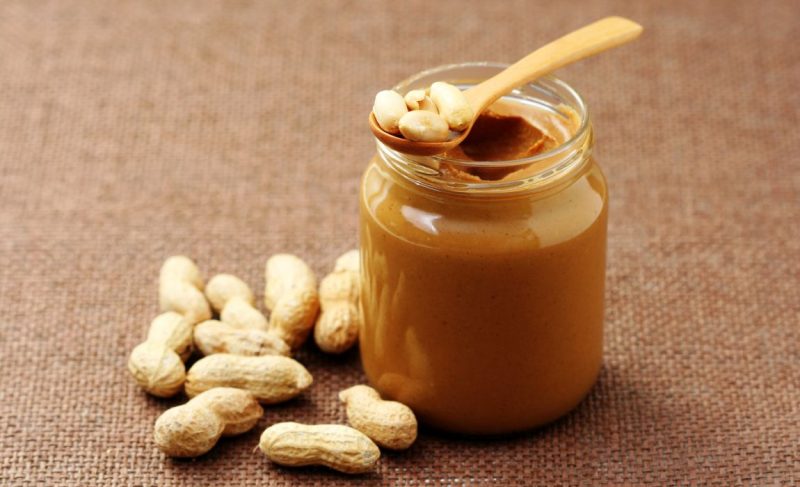
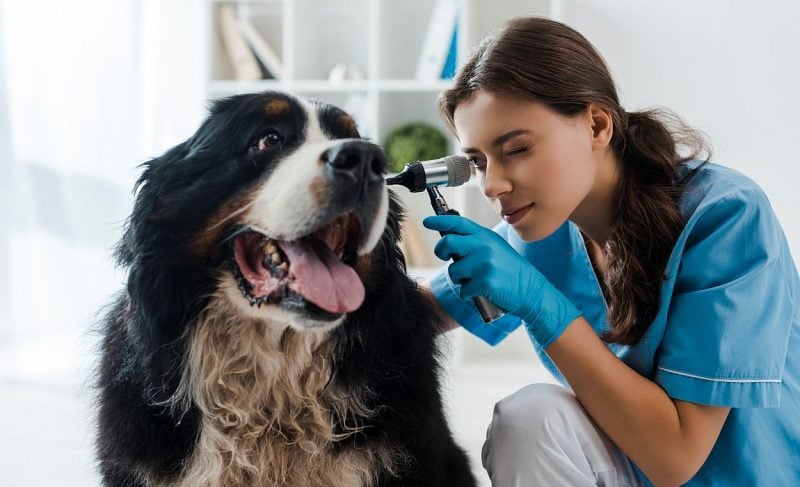

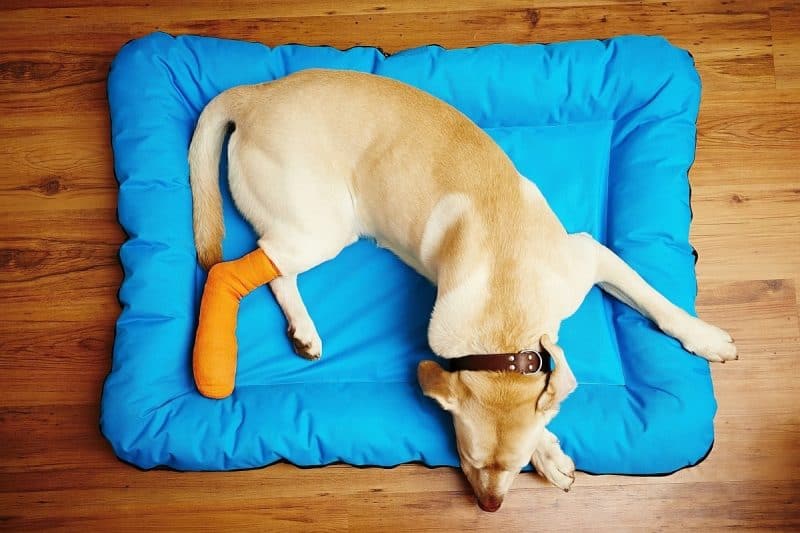
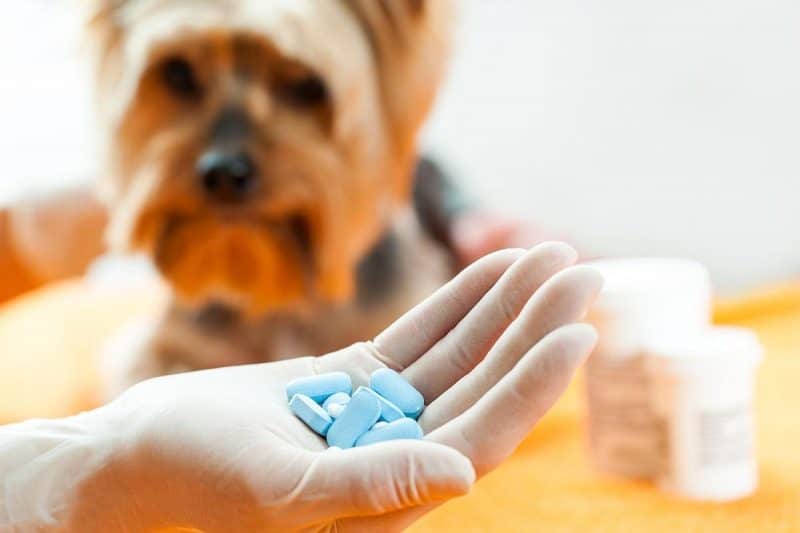
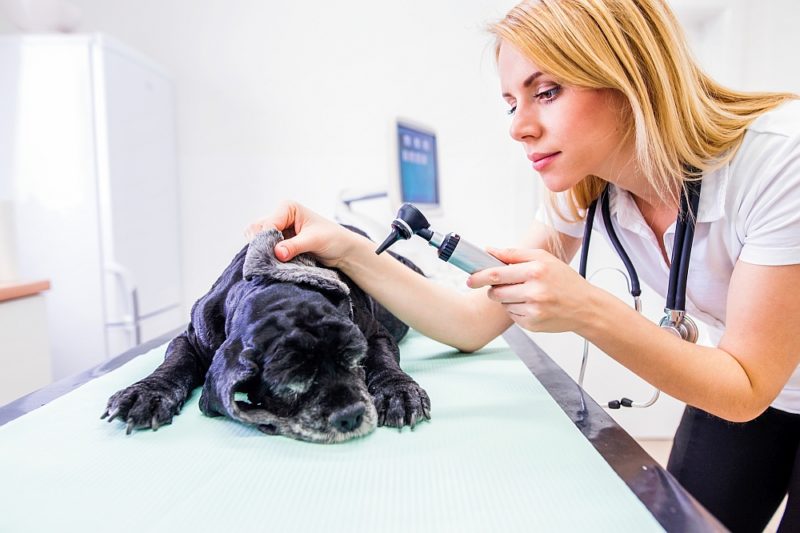
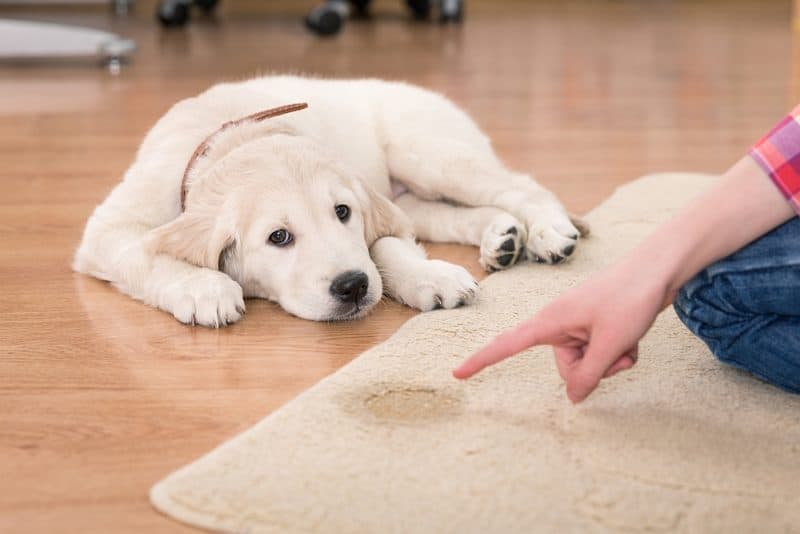

Leave a Comment